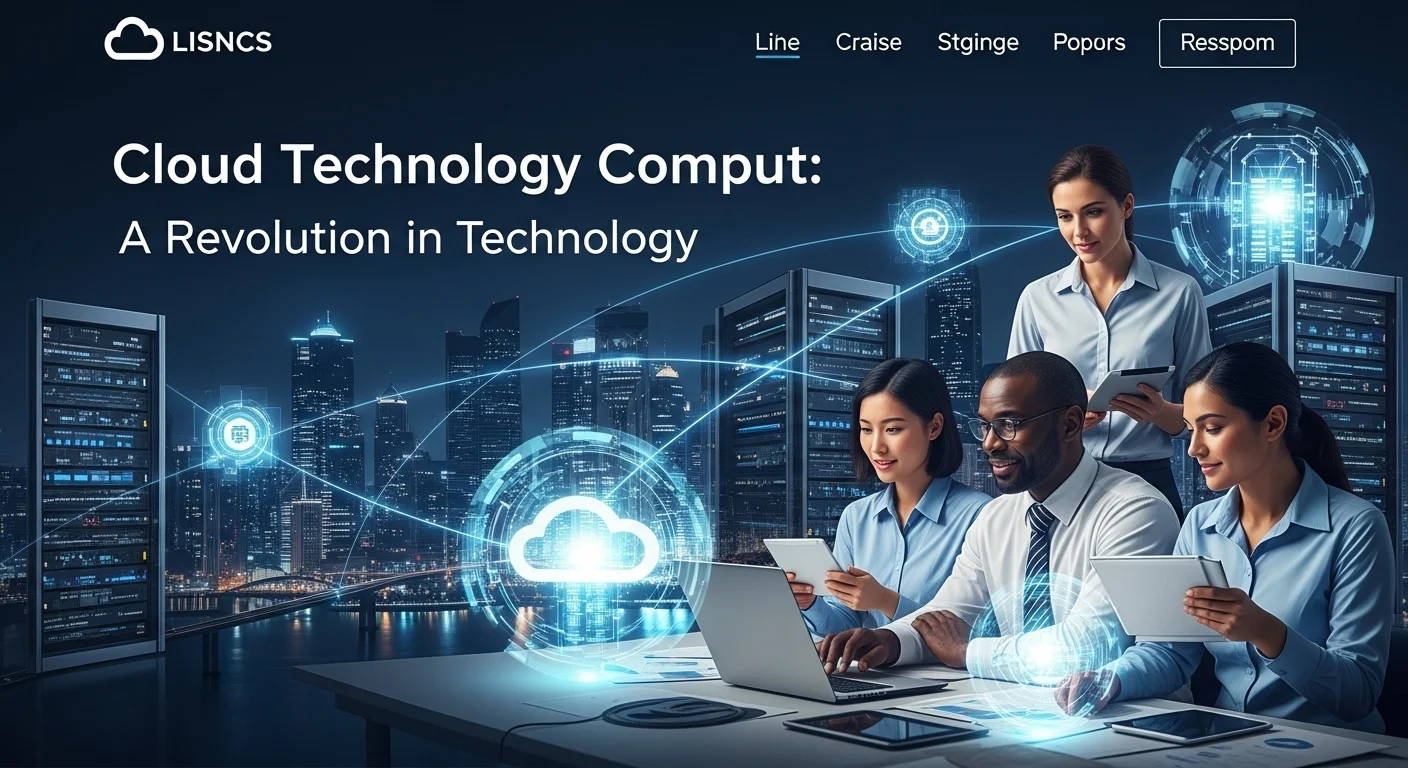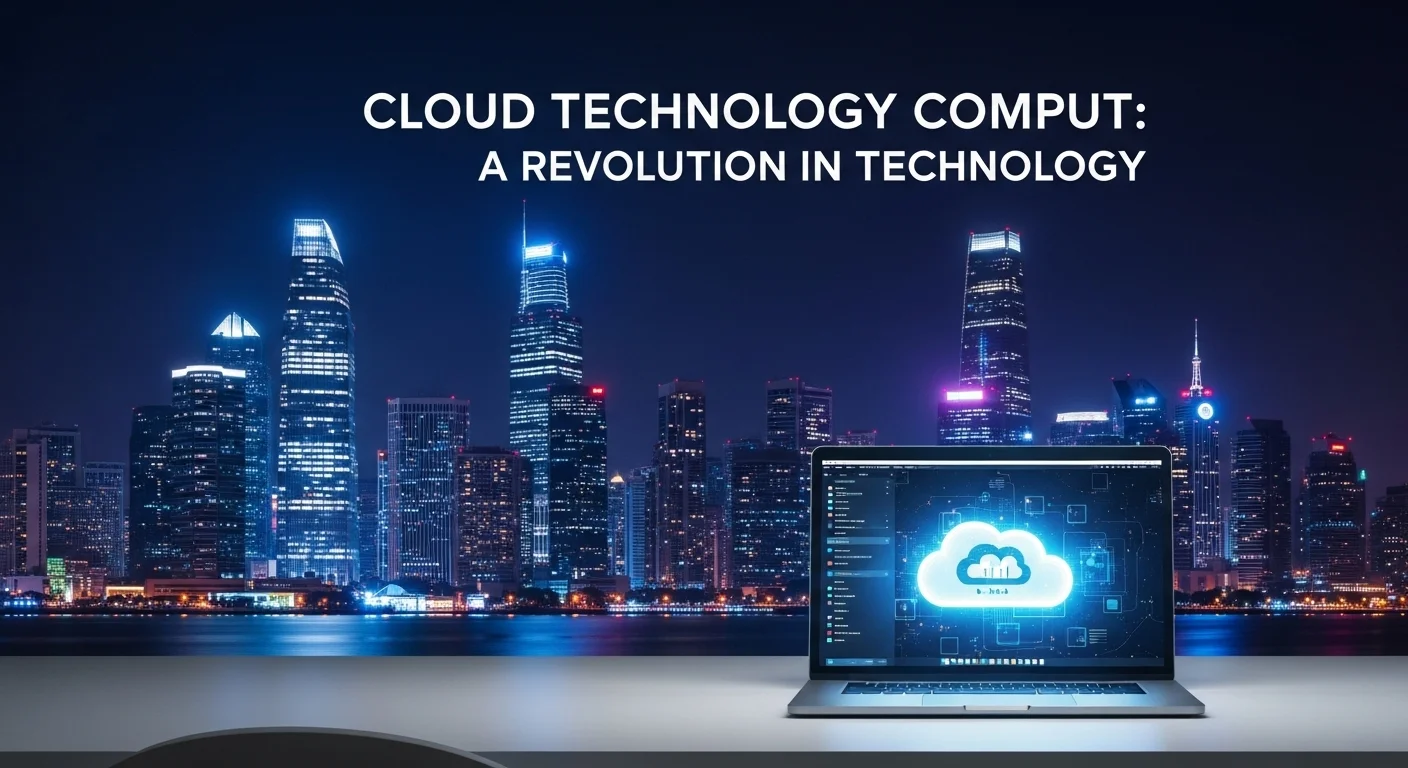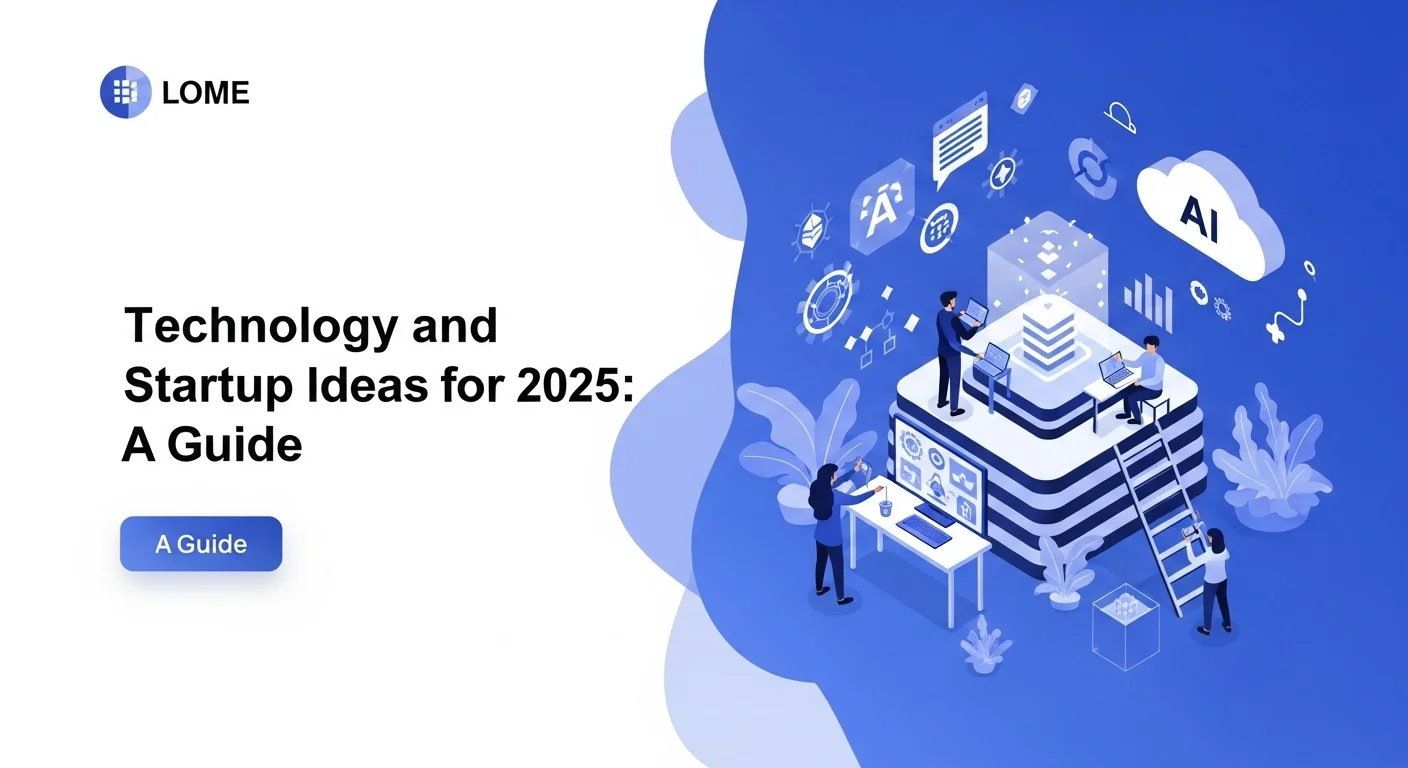What is Cloud Computing? Your Guide to the Tech Revolution

Executive Summary
Ever wondered how services like Netflix, Spotify, or Google Drive just... work? The magic behind them is cloud computing, and it's not just for tech giants anymore. I've spent my career helping businesses navigate this world, and I can tell you it's one of the biggest shifts in technology I've ever seen. This article is your straightforward guide to understanding it. We'll skip the dense jargon and get straight to what matters: what the cloud is, how it works with different service models like IaaS, PaaS, and SaaS, and why it's a game-changer for businesses seeking growth and efficiency. We'll also look at the exciting new trends like AI integration and serverless computing. My goal is to give you the practical knowledge you need, whether you're a tech pro or a business leader, to see how the cloud can unlock new possibilities.
Table of Contents
Table of Contents
What is Cloud Computing and Why Does It Matter?
Let's simplify this. At its heart, cloud computing is about renting computing power instead of owning it. Imagine, instead of buying and maintaining a massive personal library, you had a subscription to a global library that delivered any book you wanted, instantly, over the internet. That's the cloud. Instead of buying and managing your own expensive, physical servers and data centers, you can access services like processing power, storage, and databases on-demand from a provider like Amazon Web Services (AWS), Microsoft Azure, or Google Cloud. You only pay for what you use, just like an electricity bill. This approach has completely changed the game, becoming the backbone of our digital world. It’s important because it has leveled the playing field, allowing a small startup in a garage to use the same powerful technology as a Fortune 500 company, driving innovation at a scale we've never seen before.
The secret sauce behind this is something called virtualization. Think of it as a way to divide one single, powerful physical server into many smaller, separate virtual servers. This allows cloud providers to serve thousands of customers from a shared pool of hardware, which is much more efficient. All this hardware lives in massive, highly secure buildings called data centers. I've had the chance to see a few, and they are truly the engine rooms of the internet—rows upon rows of servers powering everything from your favorite streaming service to critical business applications. They are what make the on-demand, digital life we now take for granted possible.
The Core Service Models: IaaS, PaaS, and SaaS
To meet different needs, cloud services are usually offered in three main flavors. I've always found an analogy helps make this clear. Let's imagine you want to start a pizza business.
1. Infrastructure as a Service (IaaS): This is the most basic level. The cloud provider gives you the fundamental building blocks of computing: virtual servers, storage, and networking. In our pizza analogy, IaaS is like being given a commercial kitchen: you get the oven, the counters, and the refrigerator. You're still responsible for bringing your own ingredients (data), recipes (applications), and for making the pizza yourself. This model offers the most control and is perfect for IT teams who want to manage their own infrastructure without the physical hardware. Examples include Amazon EC2 and Google Compute Engine.
2. Platform as a Service (PaaS): PaaS takes it a step further. It provides the infrastructure, plus the tools and software needed to build and run applications. In our analogy, this is like a pizza-making kit. You get the kitchen, the pizza dough, the sauce, and the cheese. All you have to do is add your unique toppings and bake it. PaaS is a dream for developers because it lets them focus on writing code and creating amazing apps without worrying about managing the underlying platform. Popular examples are AWS Elastic Beanstalk and Google App Engine.
3. Software as a Service (SaaS): This is the model you're probably most familiar with as a consumer. Here, a complete, ready-to-use software application is delivered over the internet on a subscription basis. For your pizza business, this is like simply ordering a pizza to be delivered to your door. You don't have to worry about the kitchen, the ingredients, or the cooking—you just enjoy the final product. Services like Gmail, Salesforce, and Microsoft Office 365 are all classic examples of SaaS.
The Real-World Benefits for Your Business
I've seen firsthand how adopting the cloud can transform a business. The benefits go far beyond just technology; they change how companies operate and compete. One of the biggest wins is cost. Think about it: you eliminate the huge upfront expense of buying servers and building a data center. Instead, you switch to a predictable operating cost, paying only for the resources you actually consume. It's a much smarter way to manage your budget.
Then there's scalability, which is a huge advantage. In the old days, you had to buy servers to handle your busiest day of the year, meaning they sat idle most of the time. With the cloud, you can scale up your resources in minutes to handle a traffic spike, and then scale back down when things quiet down. It’s like having an elastic business that can grow or shrink with demand. This agility is what allows companies to move fast and innovate. Development teams can access the latest technologies like AI and machine learning with a few clicks, instead of waiting weeks for new hardware to be approved and set up. This speed is a massive competitive advantage in today's market.
Powering the Future with Data-Intensive Technology
We live in an age of data. The ability to collect, process, and analyze massive amounts of it is what separates leaders from laggards. This is where the cloud truly shines. Trying to run Big Data analytics or train an AI model on a local computer is like trying to fill a swimming pool with a garden hose. It’s just not practical. The cloud provides the virtually unlimited storage and computing power needed for these data-intensive tasks.
Cloud providers offer specialized tools designed for this. Data warehouses like Google BigQuery or Amazon Redshift can sift through petabytes of data to uncover valuable business insights. And technologies like machine learning frameworks allow businesses to do incredible things—from predicting customer behavior to powering recommendation engines. The cloud has made these advanced capabilities, once only available to tech giants, accessible to everyone. This democratization of data is fueling a new wave of innovation, and it's all powered by the incredible scale and flexibility of cloud computing.

A Complete Guide to Cloud Computing in Business and Technology
Going beyond the basics, a successful cloud strategy involves smart technical architecture, savvy business techniques, and a clear understanding of the major players. For any organization I've worked with, mastering these areas has been the key to building secure, efficient, and powerful solutions. Let's break down what you need to know to navigate the cloud like a pro.
Technical Methods: Building for the Cloud
Simply moving an application to the cloud isn't enough. To get the real benefits, you have to think differently about how you build and run things. Here are the core methods I always discuss with my clients.
Cloud Migration Strategies: Getting your existing applications to the cloud is your first step. The right path depends on your goals:
- Rehosting (Lift and Shift): This is the quickest route. You're essentially moving your application as-is to a virtual server in the cloud. It’s like moving your furniture to a new house without redecorating. Fast, but you might not be using the new space efficiently.
- Replatforming (Lift and Reshape): A happy medium. Here, you make a few small tweaks to your application to take advantage of cloud features, like switching to a managed database service. It's a good balance of speed and optimization.
- Refactoring/Re-architecting: This is the deep dive. You rebuild parts of your application to be fully 'cloud-native,' often using a modern microservices architecture. It's more work upfront, but in my experience, it delivers the biggest long-term rewards in scalability and resilience.
Hybrid and Multi-Cloud Architectures: It's not always about choosing one cloud. A hybrid cloud mixes your private, on-site infrastructure with a public cloud. This is perfect for businesses that need to keep certain data in-house for security or speed reasons but still want the power of the public cloud. A multi-cloud strategy means using services from multiple providers, like using AWS for its data tools and Azure for its enterprise integrations. This helps you avoid being locked into one vendor and lets you pick the best tool for each job.
Cloud-Native Technologies: To unlock the cloud's full potential, you should build applications specifically for it. This means using technologies like containers and serverless. Containers, managed by platforms like Kubernetes, are like perfectly packed, self-contained boxes for your applications. They run consistently anywhere. Serverless computing, with services like AWS Lambda, takes this even further. You just upload your code, and the cloud runs it for you without you ever having to think about a server. It's one of the most exciting new areas in cloud tech—incredibly cost-effective for certain workloads because you literally only pay for the milliseconds your code is running.
Business Techniques for Cloud Success
Technology is only one side of the coin. Your business practices need to evolve too.
FinOps (Cloud Financial Management): The pay-as-you-go model is great, but it can lead to surprise bills. FinOps is a cultural shift that brings financial discipline to your cloud spending. It's about teams from finance, tech, and business working together to track costs, optimize usage (like turning off idle resources), and forecast spending. Think of it as having a smart meter for your cloud usage to ensure you're not wasting money.
DevSecOps and Cloud Security: In the cloud, security is a shared job. The provider secures the infrastructure, but you're responsible for securing your data on it. DevSecOps is the practice of integrating security into every step of your development process, not just bolting it on at the end. This means automating security checks, tightly controlling who has access to what, and constantly monitoring for threats. In today's world, strong security isn't just a feature; it's fundamental to earning and keeping customer trust.
Governance and Compliance: As you grow, you need rules to keep your cloud environment from becoming a chaotic mess. A governance framework helps you manage who can create resources, enforce policies, and ensure you're complying with regulations like GDPR or HIPAA. This involves simple things like tagging resources to track costs and ownership, and it ensures your cloud environment stays secure and organized as it scales.
A Quick Comparison: The Major Cloud Providers
The market has three main contenders. While they all offer similar core services, they have unique personalities and strengths.
Amazon Web Services (AWS): As the original pioneer, AWS has the largest market share and the most extensive list of services. It's the go-to choice for many startups and businesses that want the widest possible array of tools and a rock-solid, global platform.
Microsoft Azure: Azure's superpower is its deep integration with Microsoft's ecosystem. If your company runs on Windows Server, Office 365, and other Microsoft products, Azure provides an incredibly smooth, integrated experience, especially for hybrid cloud setups.
Google Cloud Platform (GCP): GCP's reputation is built on Google's own strengths: world-class networking, data analytics, and machine learning. It's a favorite among developers and companies focused on containerization (thanks to Kubernetes, which Google originally developed) and data-intensive applications.
The right choice depends on your needs. Often, the best strategy is multi-cloud, where you cherry-pick the best services from each provider to create the perfect solution for your business.
Resources for Building Your Skills
Cloud technology moves fast, so continuous learning is essential. Here's where I point people to get started:
- Official Training and Certifications: AWS, Azure, and GCP all offer excellent free learning portals and professional certifications to validate your skills.
- Online Learning Platforms: Sites like A Cloud Guru, Coursera, and Udemy have thousands of courses from industry experts on every cloud topic imaginable.
- Community and Documentation: The official provider documentation is your best friend. Online communities on Reddit or Stack Overflow are also fantastic places to ask questions and learn from others.
- Open-Source Projects: Getting your hands dirty with projects like Kubernetes or Terraform is one of the best ways to learn the tools that power the modern cloud.
By combining technical know-how with smart business practices and a commitment to learning, any organization can harness the power of the cloud to innovate and succeed.

Tips and Strategies to Master Your Cloud Experience
Getting started with the cloud is one thing; mastering it is another. True success comes from continuous optimization and aligning your cloud strategy with your business goals. Over the years, I've seen a few key practices separate the leaders from the rest. Here are my top actionable tips for IT pros, developers, and business leaders to get the most out of the cloud.
Best Practices for Cloud Management and Optimization
An unmanaged cloud can become a costly and inefficient jungle. These best practices will help you stay in control.
1. Embrace a FinOps (Cost Management) Mindset: Never let your cloud bill surprise you. A proactive approach to cost management is non-negotiable.
- Track Your Spending: Use the built-in cost management tools from your cloud provider. They give you a clear view of where every dollar is going. For multi-cloud setups, third-party tools can offer a unified dashboard.
- Set Budgets and Alerts: This is a simple but powerful habit. Set budgets for your projects and configure alerts that notify you when you're getting close to your limit.
- Eliminate Waste: Regularly hunt for and eliminate wasted resources. It's like turning off the lights when you leave a room. Shut down idle servers, delete old storage volumes, and use cost-saving plans like Reserved Instances for predictable workloads.
2. Make Security Your Top Priority, Always: Cloud security is an ongoing commitment, not a one-time task. A strong security posture is your best defense.
- Enforce the Principle of Least Privilege: This is my number one security rule. Give users and applications only the bare minimum permissions they need to do their job. Nothing more.
- Mandate Multi-Factor Authentication (MFA): MFA adds a critical second layer of defense beyond just a password. In my opinion, it should be required for every single user, especially those with admin rights.
- Encrypt Everything: Protect your data whether it's moving across the network (in transit) or sitting in storage (at rest). Modern cloud services make this easy to implement.
- Automate Compliance Checks: Use tools that continuously scan your environment to ensure it aligns with your security policies and regulatory requirements. Let the machines do the boring work for you.
3. Automate Everything with Infrastructure as Code (IaC): Manually clicking around a web console to set up infrastructure is slow and prone to human error. IaC is the answer.
- Define Your Infrastructure in Code: Use tools like Terraform or AWS CloudFormation to define your entire infrastructure in simple text files. The tool then builds it for you perfectly every time.
- Version Control Everything: Store these configuration files in a system like Git. This gives you a complete history of every change, makes collaboration easy, and allows you to roll back instantly if something goes wrong.
- Integrate into CI/CD Pipelines: Treat your infrastructure just like your application code. Build, test, and deploy it through an automated pipeline for speed and reliability.
Leveraging the Latest in Cloud Technology
To stay competitive, you need to look beyond the basics and embrace the technologies that give you an edge.
Embrace Serverless Architectures: Serverless computing lets you run code without thinking about servers. I've seen it unlock incredible agility for teams building modern applications. It offers fantastic scalability and a true pay-for-what-you-use cost model, making it one of the most efficient ways to build.
Integrate AI and Machine Learning Services: You no longer need a PhD in data science to use AI. Cloud providers offer powerful, pre-trained AI services for things like image recognition or text-to-speech. You can also use platforms like Amazon SageMaker to build, train, and deploy your own custom machine learning models, giving your applications superpowers.
Explore Hybrid and Edge Computing: The cloud isn't just in a faraway data center. Hybrid solutions like AWS Outposts or Azure Stack let you run cloud services in your own facilities to meet data privacy or low-latency needs. Edge computing goes even further, processing data right where it's created—on a factory floor or in a retail store. This enables real-time applications that were previously impossible.
Business Tools and Real-World Experiences
The right tools make all the difference. Monitoring platforms like Datadog or New Relic give you deep visibility into your application performance. Security tools from companies like Palo Alto Networks offer specialized protection for the cloud. Collaboration tools like Slack or Microsoft Teams are essential for keeping teams in sync.
A common journey I've witnessed is with containerization. A team starts with Docker to package their apps, which is great. But soon they're struggling to manage hundreds of containers. The lightbulb moment comes when they adopt an orchestrator like Kubernetes to automate it all. This journey highlights a key lesson: your tools and strategies must evolve as you scale.
If there's one resource I recommend to everyone, it's the AWS Well-Architected Framework. It's a collection of best practices for building exceptional cloud infrastructure. While it's from AWS, its principles on security, reliability, performance, and cost optimization are universal and serve as an invaluable guide for any cloud architect.
By putting these strategies into practice—from disciplined cost management to embracing automation and new technologies—you can transform the cloud from a simple utility into a powerful engine for innovation and a genuinely better technology experience.
Expert Reviews & Testimonials
Sarah Johnson, Business Owner ⭐⭐⭐
The information on cloud computing is good, but as a business owner, I'd love to see more real-world case studies for small businesses like mine.
Mike Chen, IT Consultant ⭐⭐⭐⭐
A solid overview of cloud tech. It clarified a lot for me, though a few of the more technical concepts could be broken down even further.
Emma Davis, Tech Expert ⭐⭐⭐⭐⭐
Fantastic article! It's incredibly thorough and well-explained. As a tech professional, this was a huge help for my specialization. Everything was crystal clear.



